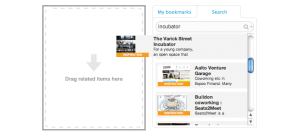You may have missed it but the internet is a huge chat room. Everything is about conversations and interactions.
Creating Friendlier, “Conversational” Web Forms
Web forms are constantly a hot topic when it comes to web design and user interaction. The reasons for this are vast, but one of the more obvious reasons is that forms are the most basic way for a user to input information into your application. I
In this article, we’ll discuss a few techniques that allow your forms to respond to the user’s input, while helping to obscure unnecessarily confusing or overwhelming elements.
Designing for Easy Interaction
Success in interaction design is largely a matter of following established patterns, so people can apply what they already know to new contexts. Using known and well-established interactive controls goes a long way in designing for easy interaction.
There are specific considerations that will help make controls more usable for people using assistive technologies. And there are design considerations that make interaction more usable and enjoyable for everyone, including people with disabilities.
Identify and describe interactive elements.
What Will A Great Website Do For You?
In short – a great website will make your business perform better.
Your website can:
- Lead new customers to your door
- Increase sales
- Extend your brand reach and recognition
- Decrease customer service time
- Become a “hub” for communication and social media
We focus on the purpose of your website within your business.
LABELS: MANAGING USER EXPECTATIONS
Users have expectations — it’s surprising, I know. Users expect a button to perform an action: submit a form, open a new page or edit content. No discovery needed, this user expectation is pretty standard and not limited to the digital world only. As a designer, this user expectation is pretty simple to create.Have an action for the user to perform? Just add a button. Almost every user interface (UI) component has some kind of built-in user expectation and for the most part we all do a great job at matching overall UI components with their user goal and expectation.
However, the button itself is not the only item that can make or break what the user expects to happen. An improperly labeled button will not only create a question about what the button is (they may never even use it), but will also change what the user expects to happen when they do press it.
Labels make a huge difference in any user experience design.
Whether we like it or not, the heroes of the story are the web users so we make sure their expectations are as closely met. They will dicate your webbie’s effectiveness so better get on the good side.
(via Choc Chip Digital)

